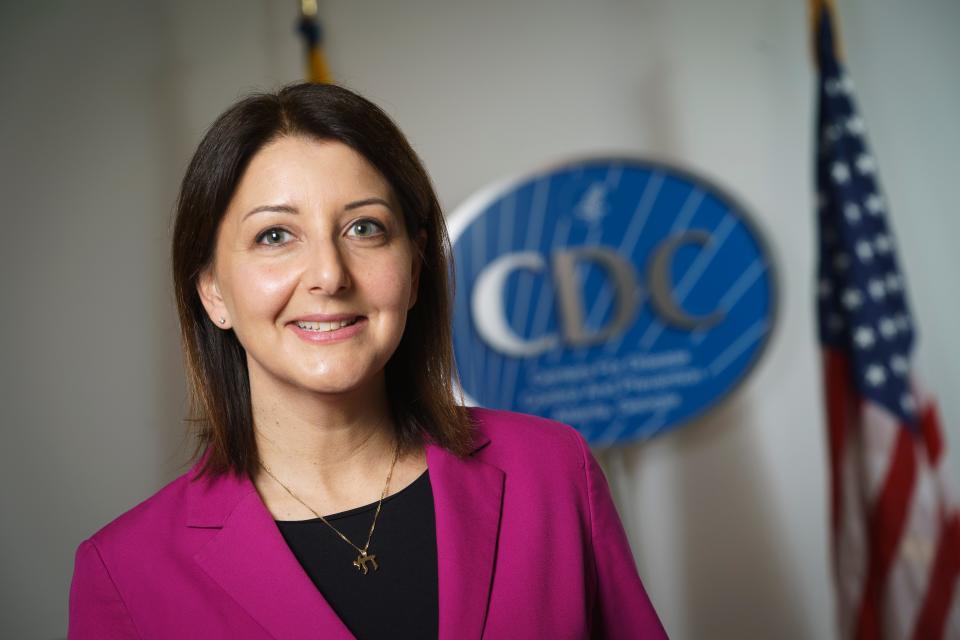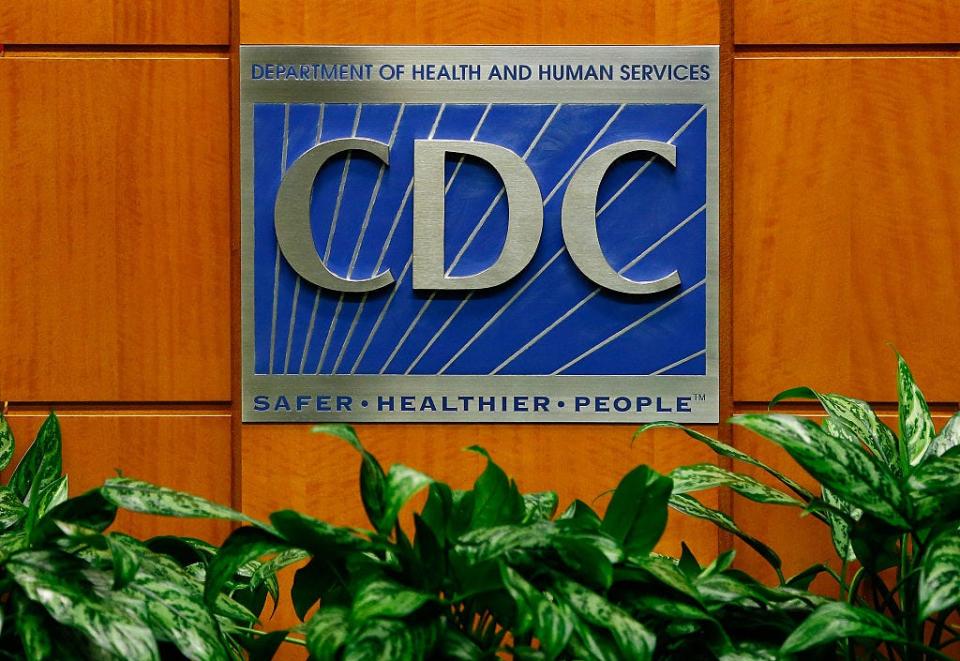CDC shortens COVID-19 isolation period. What to know about new guidelines
The Centers for Disease Control and Prevention is updating its COVID-19 guidance so people who test positive for the virus will no longer be directed to isolate at home for five days.
On Friday, top health officials announced a new policy focusing on actions people can take to reduce spreading a variety of common respiratory viruses, such as influenza, respiratory syncytial virus (RSV) and COVID-19. Those actions include staying at home when sick, staying up to date with vaccines, practicing good hygiene and improving indoor air quality.
The change marks the first time the agency has revised its coronavirus guidelines since 2021. It is intended for people and employers, not for hospitals or nursing homes that have separate guidance, the CDC said.
CDC officials called the change a streamlined approach that’s easier for people to understand and more in line with circulating respiratory viruses that spread the same way and have similar symptoms.
The announcement reflects progress made in reducing hospitalizations and deaths from COVID-19 over the last two years, CDC Director Mandy Cohen said in a Friday news conference. Still, she emphasized continued use of vaccines and treatments.
“We're in a different situation, but we must use the tools that work to protect against respiratory viruses,” she told reporters. “That’s why our updated guidance emphasizes some core prevention actions to protect against severe illness from respiratory viruses.”

In February, the Washington Post first reported on the CDC's plans to change the guidance.
What guidance does
Friday's guidance, CDC officials said, is meant to target respiratory viruses more broadly because the flu, RSV and COVID-19 all have similar symptoms such as cough and fever; have similar means of spread; and require the same protection strategies.
The CDC is recommending that people who test positive for the coronavirus should base their isolation period on clinical symptoms. The CDC doesn't recommend testing as a standard for deciding when someone is no longer contagious, in part, because CDC surveys show fewer people use at-home tests if they have symptoms, according to Dr. Brendan Jackson, who leads respiratory virus response for CDC's National Center for Immunization and Respiratory Disease. The CDC's decision is more streamlined to tell people to stay home if they are sick.
Americans can return to public life if they have been fever-free for at least 24 hours and symptoms are improving, regardless of a positive test, agency officials told reporters on Friday. When they return to normal activities, the CDC recommends people use preventative strategies for the next five days. This includes limiting close contact with others, enhancing hygiene like hand-washing, improving ventilation, masking and testing as needed.
Officials said the federal action followed similar updated guidance from California and Oregon, which were the first states to announce new COVID-19 guidelines in early January that also did away with specific isolation times.
Dr. Lara Jirmanus, a clinical instructor at Harvard Medical School, said people may struggle to interpret this new guidance.
Exclusive: Health is political, Americans are divided. How new CDC head aims to fix that.
“This guidance is going to be confusing to people because when they hear it, they're going to hear, ’the CDC now says COVID is not a big deal,’” said Jirmanus, a primary care doctor in Cambridge, Massachusetts. “That's not true. It's a deadly and disabling virus.”
She added people who are repeatedly infected increased their risk of developing long COVID, a potentially disabling condition that inflicts millions of Americans. Infants not yet eligible for vaccination remain at risk, as well.
Recent weekly reporting periods indicate nearly 19,000 people are hospitalized and more than 1,000 die from COVID-19 each week. However, Jackson, of the CDC, said COVID-19 figures are now approximately the same as those for the flu and far lower than early in the pandemic.
“These data reinforced that COVID-19 is still an important public health threat, but it is not the emergency that it once was,” Jackson said. “Its health impacts increasingly resemble those of other respiratory virus viral illnesses.”
How public should respond
Anyone who has a respiratory illness ? a cough, stuffy nose, often a fever ? should assume they have either COVID-19, the flu, or RSV, all of which kill tens of thousands of vulnerable Americans a year, said Dr. Paul Offit, a pediatrician and infectious disease specialist at the Children's Hospital of Philadelphia.
He recommends that people at risk for severe disease from COVID-19, including those who are pregnant, immunocompromised, or over 65, get tested quickly if they develop these symptoms so they can benefit from the very effective available treatments, Paxlovid and the antiviral Molnupiravir.

Anyone not at high risk should just assume they have one of these highly contagious infections and should wear a mask to protect the vulnerable, Offit said.
Dr. William Schaffner, an infectious disease specialist at Vanderbilt University School of Medicine, said he's one of the few people in his Nashville, Tennessee, region still masking in public. He and his wife are caring for a family member undergoing chemotherapy for cancer and he doesn't want to bring anything home.
He agrees that a policy change was needed to bring it more in line with what people are already doing. "These new guidelines will be welcomed."
State health officials cheered the new guidance as a practical yet important step.
"The thing that I heard across the board from our members is it's time to really try to align COVID with other respiratory illnesses," said Marcus Plescia, chief medical officer of the Association of State and Territorial Health Officials. "It's in step of where we need to be going and where our society is going anyway."
Dr. Anand Parekh, chief medical adviser for the Bipartisan Policy Center, said most members of the public likely aren't following the previous isolation guidelines anyway.
"We're not going to prevent COVID anymore ? people are going to get COVID," he said. But, he added, what's important is preventing hospitalizations, severe illness and deaths in the face of a virus that "is much more transmissible than the flu or than a regular rhinovirus that gives you the common cold."
Western states moved first
The CDC's shift mirrors updated guidance from California and Oregon, which were the first states to announce new COVID-19 guidelines in early January that also did away with specific isolation times.
In California's order, issued on Jan. 9, the changes were attributed to the reduced impact of COVID-19 compared to past years, the availability of treatment and the changing expectations to keep people most at-risk safe while posing minimal disruptions to the public.
Those who experience no apparent symptoms are no longer required to isolate at all, according to the state policies.
“We are now at a different point in time with reduced impacts from COVID-19 compared to prior years due to broad immunity from vaccination and/or natural infection, and readily available treatments available for infected people,” the director of the California Department of Public Health Dr. Tomás Aragón said in the state order.

Looking ahead
The concern remains for people returning to work while contagious, which is often the case for people who can’t afford to take time off.
Cohen said the CDC is encouraging companies to allow employees to stay home when they’re sick, regardless of whether it's COVID-19 or another respiratory viral illness.
The decision also comes as the CDC earlier this week recommended a booster shot of the latest COVID-19 vaccine for people ages 65 and older. Cohen said it’s important to get vaccinated, with an updated COVID-19 and flu shots expected this fall.
Karen Weintraub contributed to this report.
This article originally appeared on USA TODAY: CDC COVID-19 guidance shortens five-day isolation period
